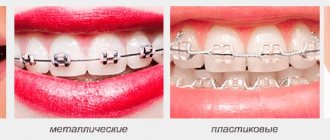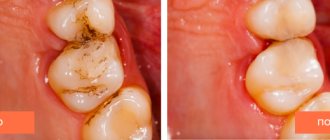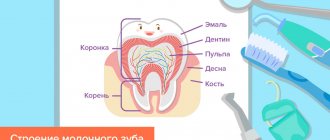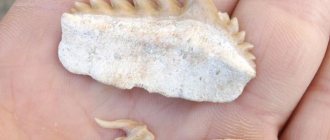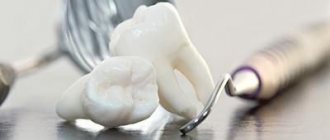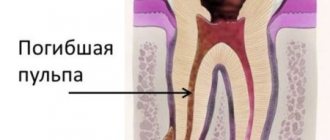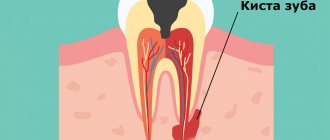The tooth extraction procedure is a surgical procedure. During this operation, the tooth and root are pulled out from the gum. Despite the apparent simplicity of the manipulation, the process can take a long time, especially if the case is complex and requires increased attention.
According to many patients, all dentists want to remove the tooth immediately. This is wrong. Qualified specialists at Dr. Jacques' clinic strive to preserve the beauty and health of natural teeth. If there is even a small chance to cure a tooth, they will take it. Well, if the case is serious and removal cannot be avoided, our dental surgeons with extensive experience will perform tooth extraction surgery quickly and painlessly.
Indications and contraindications for molar tooth extraction
Reasons for removing a molar tooth may be:
- purulent periostitis;
- abscess;
- phlegmon;
- large tumor in the tooth area;
- purulent periodontal disease;
- the presence of a cyst in the area of the diseased tooth;
- exposed pulp;
- longitudinal tooth fracture;
- critical tooth decay;
- critical tooth curvature;
- disease of the dental bone tissue;
- sinusitis.
The following reasons are contraindications to the removal of molars:
- acute heart diseases;
- acute viral diseases;
- flu;
- angina;
- renal failure;
- pancreatitis;
- hepatitis;
- acute diseases of the nervous system;
- oncological diseases
- initial and final stages of pregnancy;
- stomatitis;
- gingivitis
- general degeneration of the body;
- alcohol poisoning.
Are baby teeth pulled out?
Extraction of temporary units is carried out if there are medical indications for this. If the change takes place in a timely manner, no curvature of the dentition is observed; there is no need to loosen the teeth ahead of time, as this is fraught with malocclusion in the future.
The procedure cannot be avoided if:
- caries has become so rampant that all that remains of the crown are the roots;
- for some reason, urgent dental treatment cannot be performed;
- The permanent tooth has already erupted, but the milk tooth is still sitting in its place;
- flux has developed, body temperature is elevated, the patient is worried about acute pain;
- a cyst has formed on the root;
- in the gum area a fistula filled with purulent contents is visualized;
- periodontitis has been diagnosed, which can provoke the death of the permanent tooth germ;
- root resorption occurs with a delay, which poses a threat to permanent occlusion.
Extraction is also carried out if the tooth is very loose, but does not fall out. This leads to the fact that the child cannot eat normally and has a lisp.
Molar removal technology
Before proceeding with the removal of a molar, the doctor must make sure that there is no curvature of the roots. For this, an x-ray is taken. If the roots are not bent, the patient is given an anesthetic injection. After 10 minutes, the tooth can be removed.
First, the dentist carefully separates the gum from the body of the tooth. Then he grabs the tooth with pliers and begins to swing it and rotate it at the same time. After several such manipulations, the doctor pulls the tooth out of the alveoli.
In this sequence, both the upper and lower root teeth are removed. However, it is somewhat more difficult to grasp the upper molars with forceps.
Sometimes, when removing a molar, the doctor must first cut it into two or three parts and then pull out each part separately. This usually happens when the roots are bent.
In case of severe curvature of the roots, when they intertwine with the roots of neighboring teeth, removal must be done in fragments and under general anesthesia. In this case, the doctor completely exposes the gum around the diseased tooth.
If there is a cyst in the area of a diseased molar, the doctor is required to be highly qualified. This removal is done under both local and general anesthesia.
Two days after the removal of a molar, the patient must visit the dentist again to take an x-ray. This is necessary to ensure that all tooth roots have been removed.
What are the reasons for tooth extraction?
Before starting the operation, the dentist determines whether there are indications for this. They can be emergency or planned.
Emergency tooth extraction is carried out in the presence of inflammatory processes (osteomyelitis, periostitis), abscess, sinusitis, fracture of the crown part, atypical position of the wisdom tooth, lymphadenitis, severe toothache, etc. In such cases, treatment of the tooth is not possible or the tooth no longer has functional significance .
Planned tooth extraction is carried out if the following indications exist:
- High degree of tooth mobility (for example, with periodontitis);
- The location of the tooth on the jaw fracture line;
- Damage to a tooth or root;
- The presence of supernumerary teeth, leading to inflammation and the appearance of cysts;
- Inability to save the affected tooth;
- Incorrect position of the tooth, which injures the oral mucosa;
- Tumors of the jaw.
In addition, tooth extraction is necessary during orthodontic treatment, when it is necessary to get rid of a single tooth that interferes with the installation of a prosthesis.
Is it painful to remove molars?
Today, only older people remember the terrible pain during the removal of molars. Nowadays, the quality of painkillers is so high that the patient does not feel pain at all, even with difficult removal. At the same time, after the anesthesia wears off, pain, of course, occurs, but it is quite tolerable and depends on how much the gum under the tooth was disturbed.
If the pain is still severe, then the dentist recommends taking a painkiller tablet. The same analgin successfully dulls pain for a long time.
In rare cases, the patient may experience throbbing and increasing pain. This annoying phenomenon occurs due to inflammation of the socket. If measures are not taken quickly, the tissue begins to fester in the hole. This process can be suppressed with drug treatment, but sometimes you have to open the gum and clean the hole from pus.
What does the dentist use during surgery?
The process of tooth extraction is quite complex, despite its apparent simplicity, so different tools, techniques and materials are required. The main tools are forceps of different lengths and sizes for pulling out different teeth, elevators, chisels, excavators and a drill. The need to use a particular instrument is determined only by a doctor.
The technique used to remove a tooth is entirely determined by the degree of its destruction. Removal can be simple (using only one instrument), complex (when it is necessary to use two or more instruments) and atypical (if it is necessary to make an incision in the mucous membrane).
From materials, dentists use anesthesia (local or sedation), as well as high-quality suture material and a hemostatic sponge. All this is necessary to ensure a good result of the operation.
Removal of molars during pregnancy
Let us say right away that any surgical intervention during pregnancy is extremely undesirable. If a molar tooth hurts at this time, then ideally it would be best to simply heal it. Unfortunately, sometimes this is no longer possible and the diseased tooth has to be removed.
It is highly undesirable to remove molars in the first and last months of pregnancy. It is at this time that the fetus is most vulnerable.
If it is possible to postpone the removal of a molar until the birth of the child, then this is exactly what should be done.
Under no circumstances should you hide your pregnancy from your dentist. On the contrary, this should be said immediately. In this case, the doctor will select a harmless anesthetic that will not cross the placental barrier.
If a pregnant woman is facing a complex molar tooth extraction, then this should only be done in a hospital setting. After removal, the patient should be under medical supervision for at least two to three days. This is due to the fact that very often, after the removal of a molar, pregnant women experience a sharp increase in body temperature, and this is extremely harmful for the fetus.
What to do after tooth extraction?
After the operation is completed, the dentist gives the patient recommendations to prevent possible complications. The following rules must be followed:
- During the period of action of the anesthetic, usually within two hours after removal, you should not eat food.
- Do not put anything icy, hot or toxic into your mouth for one day after surgery.
- In the first three or four days after eating, it is advisable to rinse your mouth with a disinfectant solution and apply a special healing ointment.
- You should not touch the socket with your tongue or fingers, so as not to disrupt the process of gum formation.
- You can brush your teeth only the next day.
- Do not heat the hole so as not to provoke bleeding.
Following these simple recommendations will ensure rapid tissue healing. To ensure that the procedure goes without complications, entrust this matter to the specialists of Dr. Jacques’ clinic. They will do everything quickly, accurately, at an attractive price and absolutely painlessly.
| Prices for tooth extraction: |
| Removal of a mobile tooth | — | 1500 rub. |
| Removal of a single root tooth | — | 2000 rub. |
| Removing a multi-rooted tooth | — | 4000 rub. |
Molar tooth extraction in children
Unfortunately, young children often develop diseases in both their primary and permanent molars. Worse, it is not always possible to heal them. Dentists remove permanent teeth for children only when there is no way to save them.
Primary molars are both treated and removed. If a permanent tooth begins to grow under a baby molar, then the baby tooth is always removed, since it interferes with the normal formation of the permanent tooth.
At the same time, dentists never agree to premature removal of baby molars. Such teeth are sure to heal. If you remove a baby tooth ahead of schedule, then the baby will develop a crooked bite.
There are situations when a child’s molar tooth must be removed. Such situations include:
- molar root cyst;
- presence of granuloma;
- inflammation of the tooth root;
- inflammation of the nerve of the lower jaw;
- severe destruction of the integrity of the tooth.
Possible complications
Among the most common complications that occur during tooth root removal are the following:
- dislocation of the jaw, if the doctor has little experience;
- inflammatory process in the hole;
- penetration of bone particles into it;
- damage to teeth located next to the one being removed;
- allergy to anesthesia;
- heavy bleeding.
If you do not skimp on dental services and contact an experienced specialist, as well as follow all medical recommendations, then the risk of complications is minimized.
Is it possible to remove a molar tooth yourself?
Trying to remove a molar tooth yourself is extremely dangerous. The only exception is very severe tooth looseness. It should be borne in mind that complete removal even in this situation will not work. You will simply break off the body of the tooth from the root, and nothing more. In any case, after such an independent removal, you need to visit a dentist, who will determine what should be done next. Sometimes an artificial tooth is installed at the root, and it can last for more than one year. If the root has defects, then it has to be removed.
There are situations when you have to remove a child’s very loose baby tooth at home. In this case, you should thoroughly brush the baby’s teeth and disinfect the oral cavity. Then you should wrap your fingers in sterile gauze, loosen the tooth thoroughly, and only then try to pull it out. If this was not possible on the second attempt, then the child must be taken to the dental clinic in any case.
If you have successfully removed the tooth from the socket, then you must firmly place a gauze swab in the socket and leave it there for 30 - 40 minutes. In the next two hours, the child should not be allowed to eat or drink.
Even if the removal was successful, the baby still needs to be shown to the dentist. This is the only way to protect your child from possible complications.
Types of deletion
To remove a tooth root, your dentist may use one of the following methods:
- tongs;
- using an elevator;
- using a drill.
Tooth root removal using forceps is most often used. For the upper roots, tools with straight ends are best, and for the lower roots, beak-shaped models are best. Bayonet pliers are universal and are suitable for all cases. If the tooth is single-rooted, then the rotation method, that is, rotation, is suitable for root removal. If a tooth has several roots, luxation is required.
If the roots are located far away, it may not be possible to remove them with forceps. Then various elevators are used, which operate on a principle similar to levers. The root is twisted out using this tool, and part of it appears on the surface. After this, it is already possible to remove it using forceps. Elevators come in corner and bayonet types. The former give good results on the roots of the lower teeth and their remains, while the latter are often used to remove “figure eights”.
If there are some peculiarities in the location of the roots or their strong “ingrowth” into the bone, the dentist will need a drill. The procedure can take quite a long time and requires high professionalism, however, like all types of medical care. Depending on the severity of the problem, removal surgery may be performed using one of the following methods:
- root hemisection—one of the roots of the tooth is removed;
- root extraction - it is completely removed.
The list of treatments for dental pulpitis includes:
| — Mechanical and medicinal treatment of 1 channel |
| — Pulpitis (simple) root canal filling with three-dimensional obturation system E&Q Plus (1k/k) |
| — Pulpitis (simple) root canal filling with three-dimensional obturation system E&Q Plus (2k/k) |
| — Pulpitis (simple) root canal filling with three-dimensional obturation system E&Q Plus (3k/k) |
| — Pulpitis (complex) filling of root canals with the E&Q Plus three-dimensional obturation system (1k/k) |
| — Pulpitis (complex) filling of root canals with the E&Q Plus three-dimensional obturation system (2k/k) |
| — Pulpitis (complex) filling of root canals with the E&Q Plus three-dimensional obturation system (3k/k) |
Removal technique
When deciding how to extract a baby tooth, dentists look at the degree of its mobility and location. The intervention is carried out very carefully. This is due to some structural features of children's teeth. For example, they have very thin and very long alveolar walls, and short roots. Therefore, when gripping, it is important not to press too hard to prevent the crown from cracking.
Particular attention is paid to the issue of selection of anesthesia. For severe mobility, a local application is suitable. It involves treating the gums in the area where the affected unit is located. If the loosening is very weak or completely absent, an injection is given to achieve a stronger and more lasting anesthetic effect.



